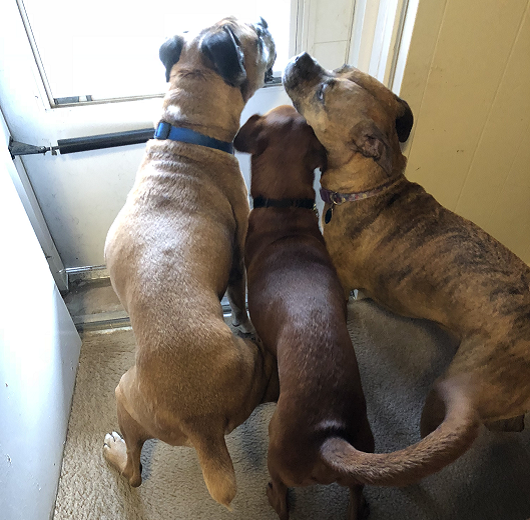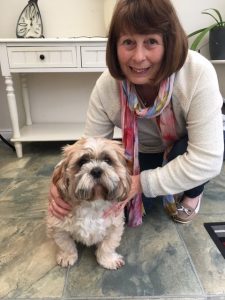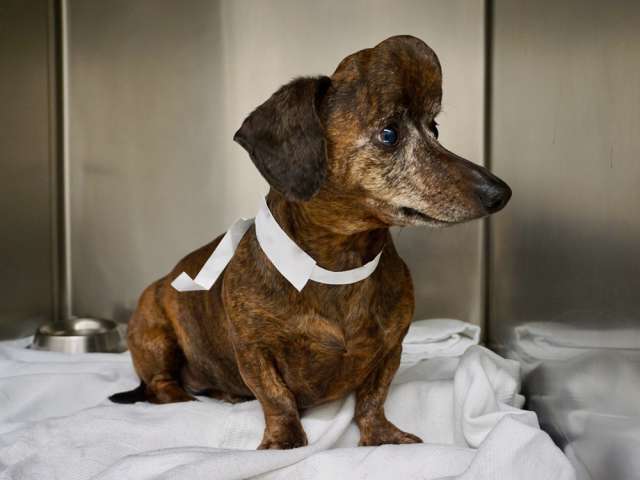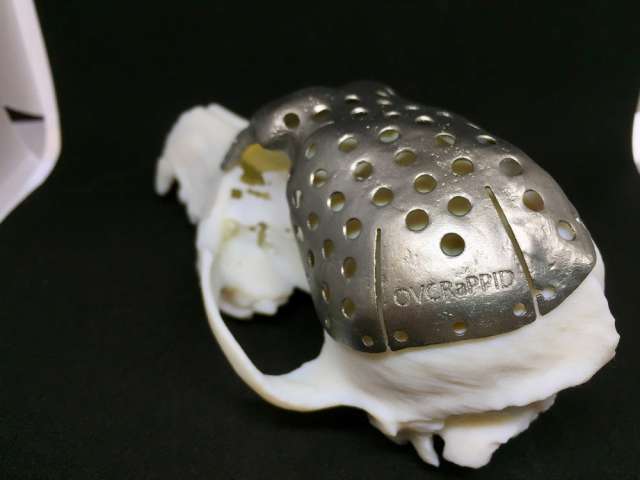I have three dogs, all of whom are considered medium-sized in that they weigh roughly over 16 kg but less than 30 kg. When they run at you, especially my larger two, it’s not so much cute as it is potentially painful, because you know that they could pretty much bowl you over if you’re not fully prepared for the onslaught.
As Lucca, a 1-year-old Shih Tzu who lives in the UK, is an adorable breed of toy dog, his little legs are pretty short…but they were causing him some big pain. One of his legs is deformed, which can often happen to smaller breeds and cause them major discomfort if the condition is not fixed.
Two of the bones in Lucca’s right front leg developed at different rates, and when one stopped growing too early, it started to act like a bow string, and caused his other leg to painfully twist and bend. But Lucca was lucky enough to be taken to Langford Veterinary Services in Bristol, where small animal orthopedic clinician Dr. Kevin Parsons sent CT scans of his tiny legs to CBM Wales, an advanced manufacturing research center that’s located an hour away from Dr. Parson’s clinic and is part of the University of Wales Trinity Saint David in Swansea.
CBM Wales has used its 3D printing and scanning services to create objects like aerospace components and medical devices, such as bespoke surgical implants and guides for both human and animal patients. We’ve seen both cats and dogs receive veterinary care through the use of 3D printed surgical implants, just like Lucca was able to benefit from his own 3D printed solution that would fix his bones and straighten out his legs in a precise and quick way.
“We’re trying to make complex problems simpler for these surgeons,” said Dr. Ffion O’Malley, an advanced-manufacturing medical engineer at CBM.
“The technology is the same.”
When determining the optimal place to cut a bone, or how best to manipulate it, surgeons have to engage in a lot of visual estimations, which is a little nerve-wracking.
“Previously, angular limb deformity surgery was planned on an X-ray, and measurements taken would be used in the operating theater. This process was a complicated process that sometimes resulted in variable outcomes,” Dr. Parsons explained.
 As Dr. Parsons receives specialist referrals from all over southwest England, he normally sees a new case of canine angular deformity about every other month. He developed a partnership with CBM through Dr. O’Malley, who joined CBM three years ago and has a background in maxillofacial surgery. She specializes in creating 3D printed parts that can be used as surgical guides and visual aids for human surgeries, and joined the firm when it was looking to build up its veterinary business.
As Dr. Parsons receives specialist referrals from all over southwest England, he normally sees a new case of canine angular deformity about every other month. He developed a partnership with CBM through Dr. O’Malley, who joined CBM three years ago and has a background in maxillofacial surgery. She specializes in creating 3D printed parts that can be used as surgical guides and visual aids for human surgeries, and joined the firm when it was looking to build up its veterinary business.
CBM’s 3D printed digital surgical planning guides and implants can help make more accurate osteotomies (cutting or removing a piece of bone), and it used the CT scans Dr. Parsons sent of Lucca’s deformed leg to create a 3D printed cutting guide for the surgery. Dr. Parsons was able to successfully place the guide on the dog’s leg and bone, then cut through it to remove a small wedge in order to properly re-position the bone.
According to Dr. O’Malley, it’s not too different to 3D print parts for small-dog surgery than it is for human surgery, and Dr. Parsons, who sees animal patients that mostly weight between 7 and 12 kg, was game to give it a go.
Dr. Parsons said about CBM’s work, “It seemed applicable to dogs with bent legs.”
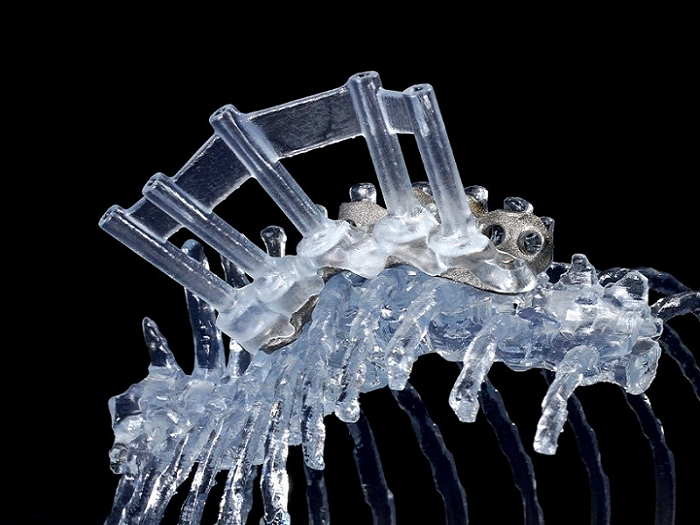
For a different dog, the team designed a bespoke spinal titanium implant and guide that allowed them to attach it to the bone. [Image: CBM Wales]
Dr. O’Malley uses an Arcam EBM 3D printer from GE Additive to 3D print parts for dogs like Lucca. When she explains 3D printing surgical guides and implants to customers, Dr. O’Malley calls it a “three-dimensional jigsaw system,” since cutting, re-positioning, adding, and taking away are all involved in the process. Dr. Parsons said that CBM’s 3D printed guides made everything more “controlled and predictable.”
Additionally, CBM 3D printed and delivered a titanium implant with 10 screw holes to Langford Veterinary Services, so that Dr. Parsons could attach it to Lucca’s twisted bone in order to hold it in the correct position. He says that these 3D printed implants are very helpful when a dog’s leg is bent in an awkward position, like Lucca’s, and has to be rotated.
The bespoke implant that CBM 3D printed for Lucca fit him perfectly, and the little dog was back to his normal activity level after only a few weeks of recovery. As we know, adding 3D printing to the surgical mix can definitely speed up the recovery process, and Dr. Parsons also explained that being able to fix a dog’s bent leg in just one procedure makes the overall treatment much faster and less expensive as well.
Discuss this news and other 3D printing topics at 3DPrintBoard.com or share your thoughts in the Facebook comments below.
[Source: GE Reports]

